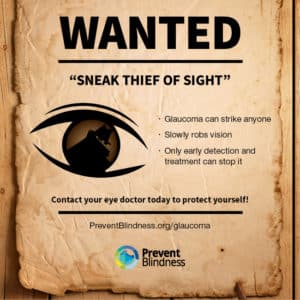
Glaucoma is often referred to as the “sneak thief of sight.”
That’s because people that have it often don’t realize it until years later. Symptoms can come on slowly. And by the time they are diagnosed, damage already has occurred.
There is no cure for glaucoma. However, the disease can be controlled with proper eyecare treatment. Early detection is the key.
January is National Glaucoma Awareness Month. So, it is as good a time as any to visit your eye doctor for a comprehensive dilated eye exam.
Advertisement
This recommendation isn’t just for the elderly, either. While age certainly is a risk factor associated with glaucoma, individuals in any age group can develop symptoms.
The nonprofit organization Prevent Blindness lists these glaucoma risk factors on its website:
Age
The older you are, the greater you are at risk (especially if you are over 60 years old). African Americans are at a greater risk at a younger age starting at age 40 and older.
Race
African-Americans age 40 and over are 4-5 times more likely to have glaucoma than others. Hispanics are also at increased risk for glaucoma as they age. Those of Asian and Native American descent are at increased risk for angle closure glaucoma.
Family History
If you have a parent, brother or sister with glaucoma, you are more likely to get glaucoma. If you have glaucoma, inform your family members to get complete eye exams.
Medical History
You are at risk if you have a history of high pressure in your eyes, previous eye injury, long term steroid use, or nearsightedness.
Advertisement
Glaucoma Resources
Prevent Blindness isn’t alone in raising glaucoma awareness. There are many resources available online including, but not limited to:
BrightFocus Foundation
National Eye Institute
Glaucoma Research Foundation
The Glaucoma Foundation
Of course, your best resource for information is most likely your eye doctor.
Advertisement
It is never too early to be proactive about your eyesight. Get that comprehensive dilated eye exam scheduled today!